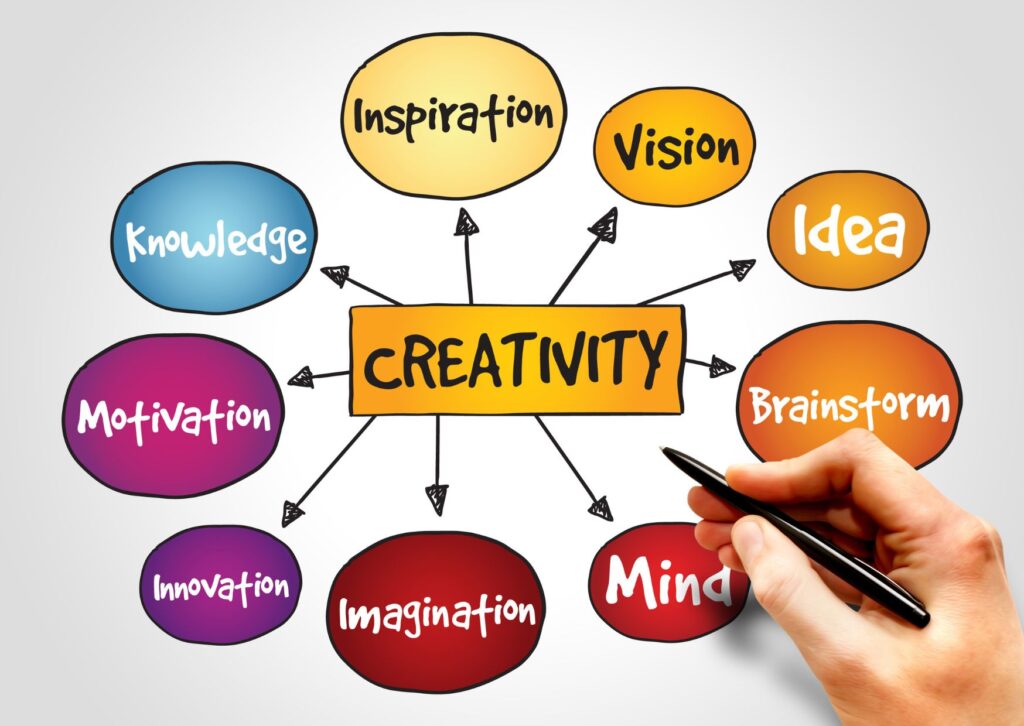10 Engaging Team Meeting Ideas for a Thriving Session
Engaging team meetings are more important than ever.
Combatting the dread of boring team meetings by fostering engaging sessions can have significant benefits.
The thought of sitting through another monotonous session can be disheartening, to say the least.
However, it’s crucial to recognise that team meetings are not just obligatory time-fillers, they can be powerful platforms for collaboration, innovation, and wellbeing.
In this blog, we will delve into why engaging team meetings are essential, the benefits they offer, the challenges in creating them, and of course, 10 actionable ideas to make your next team meeting truly engaging.
Contents
Why Are Engaging Team Meetings Important?
The Benefits of Engaging Team Meetings
The Challenges of Creating an Engaging Team Meeting
10 Ways to Make Your Team Meeting Engaging

Why Are Engaging Team Meetings Important?
Engaging team meetings are a necessity in today’s fast-paced work environment.
When team meetings are engaging, they serve as a catalyst for open communication, fostering a culture of transparency and trust.
They become a forum where ideas are not just spoken but heard, valued, and acted upon.
In an engaging meeting, team members are not passive listeners, they are active participants.
This active involvement boosts individual and collective morale, leading to higher levels of job satisfaction.
When people are engaged, they are more likely to contribute creatively, solving problems in innovative ways that a monologue from a team leader could never achieve.
Moreover, engaging team meetings help in aligning individual goals with team and organisational objectives.
This ensures that everyone is on the same page.
This alignment is crucial for the effective execution of any project and for meeting key performance indicators.

The Benefits of Engaging Team Meetings
The advantages of hosting engaging team meetings extend far beyond the meeting room.
They create a ripple effect that positively impacts various aspects of your team’s performance and wellbeing.
Here are some key benefits:
Enhanced Productivity
When team meetings are engaging, they become a productive use of time rather than a drain on resources.
Team members leave the meeting with a clear understanding of their roles, responsibilities, and the steps needed to achieve objectives.
Improved Communication
Engaging meetings encourage open dialogue.
Team members feel comfortable sharing their ideas, concerns, and feedback, leading to more effective communication.
This openness can prevent misunderstandings that often lead to project delays or failures.
Strengthened Team Cohesion
An engaging meeting environment fosters a sense of community and belonging among team members.
This cohesion is vital for teamwork and makes the collaborative efforts more effective.
Increased Job Satisfaction
When employees feel that their time is being used effectively and that they are contributing to the meeting, job satisfaction increases.
Higher job satisfaction often leads to lower turnover rates, saving the organisation time and resources in the long run.
Boosted Creativity and Innovation
Engaging team meetings provide a platform for brainstorming and creative thinking.
When team members are actively involved, they are more likely to think outside the box, leading to innovative solutions to problems.

Better Decision-Making
In an engaging meeting, diverse perspectives are considered, leading to well-rounded decisions.
The collective intelligence of the team is harnessed, making the decision-making process more robust.
Greater Accountability
When team members are engaged, they are more likely to take ownership of their tasks.
This sense of accountability ensures that tasks are completed on time and to the best of one’s ability.
Engaging team meetings have the power to elevate a team’s performance, enhance individual job satisfaction, and contribute to organisational success.

The Challenges of Creating an Engaging Team Meeting
While the benefits of engaging team meetings are numerous, achieving this level of engagement is easier said than done.
There are several challenges that organisations and team leaders often face in making meetings truly engaging.
Let’s explore some of these hurdles:
Time Constraints
In a busy work environment, finding the time to plan and execute an engaging meeting can be a significant challenge.
The urgency to cover multiple agenda items can sometimes overshadow the need for engagement.
Diverse Team Dynamics
Teams often consist of individuals with varying personalities, work styles, and communication preferences.
Catering to this diversity while maintaining a high level of engagement can be a complex task.
Virtual Meeting Fatigue
With the rise of remote work, virtual meetings have become the norm.
However, staring at a screen for extended periods can lead to ‘Zoom fatigue,’ making it difficult to keep participants engaged.

Lack of Preparation
An engaging meeting requires thoughtful planning, from setting the agenda to preparing interactive activities.
Lack of preparation can result in a disorganised meeting that fails to capture the team’s attention.
Resistance to Change
Introducing new formats or activities to make meetings more engaging can sometimes meet with resistance from team members who are accustomed to traditional meeting structures.
Limited Resources
Whether it’s the lack of advanced meeting tools or the absence of a dedicated person to manage engagement activities, limited resources can hinder efforts to make meetings more engaging.
Inadequate Follow-Up
Even the most engaging meeting can lose its impact without proper follow-up.
The challenge lies in maintaining the momentum generated during the meeting and translating it into actionable steps.
Despite these challenges, the effort to create engaging team meetings is well worth the investment. The key is to be aware of these potential roadblocks and to proactively find ways to navigate them.

10 Ways to Make Your Team Meeting Engaging
Creating an engaging team meeting may seem like a daunting task, but it’s entirely achievable with some thoughtful planning and creativity.
Here are some tried-and-true methods to elevate your next team meeting:
1. Hire a Wellbeing Speaker
One of the most impactful ways to engage your team is by bringing in an expert wellbeing speaker.
These professionals can offer valuable insights into mental health, stress management, and work-life balance, topics that are often overlooked but crucial for overall team performance.
A wellbeing speaker can break the monotony of regular meetings by introducing fresh perspectives and interactive sessions.
This not only educates the team but also fosters a culture of wellbeing within the organisation.
Make sure to choose a speaker who aligns with your team’s needs and can effectively engage with your specific audience.
Want other wellbeing activities for your team meeting?
Check out our blog “15 Fun Wellbeing Activities for your Team Meeting“

2. Implement Interactive Agendas
Gone are the days when an agenda was a mere list of topics to be covered.
Transform your agenda into an interactive tool that allows team members to contribute before the meeting even starts.
You can use digital platforms that enable team members to add points, ask questions, or even vote on topics they find most relevant.
This ensures that the meeting covers issues that the team genuinely cares about, thereby increasing engagement.
An interactive agenda also gives team members a sense of ownership and involvement, making them more invested in the meeting’s outcomes.
3. Incorporate Ice Breakers
Starting your meeting with an ice breaker can set a positive tone and immediately engage participants.
Ice breakers can range from simple ‘get-to-know-you’ questions to more elaborate team-building activities.
The key is to choose an ice breaker that is appropriate for your team’s culture and the meeting’s objectives.
This initial activity helps to ease tension, encourages open communication, and fosters a sense of community, making the subsequent discussions more fruitful and engaging.

4. Use Real-Time Polling Tools
Incorporating real-time polling can add a dynamic element to your meetings.
Whether it’s to gauge opinions on a project direction or to prioritise agenda items, real-time polls provide instant feedback.
This not only keeps team members engaged but also makes them feel that their opinions are valued.
Many online meeting platforms offer built-in polling features, making it easy to integrate this into your meeting.
Mentimeter is a great tool to help create poll’s during your meeting.
The results can be discussed immediately, providing actionable insights that can guide the meeting or future projects.
5. Rotate Meeting Leadership
Empower different team members to take turns leading the meeting.
This rotation adds a fresh dynamic to each session and prevents the monotony that can set in with a single meeting leader.
The rotating leader can bring their unique style and perspective to the meeting, keeping things interesting and engaging.
This also fosters a sense of ownership and responsibility among team members, as they know they will have a chance to steer the meeting in a direction that they find meaningful.

6. Introduce Themed Meetings
Consider organising your meetings around specific themes, such as innovation, customer focus, or team wellbeing.
A themed meeting allows for a deep dive into a particular subject matter, making the discussion more focused and engaging.
You can even decorate the meeting room or use virtual backgrounds to align with the theme.
This creates a stimulating environment that can inspire creativity and enthusiasm among team members.
Make sure to announce the theme in advance so that participants can come prepared, further enhancing engagement.
7. Incorporate Visual Aids
Visual aids like slides, charts, or videos can make your meeting more engaging by appealing to different learning styles.
A well-designed slide deck can emphasize key points, a chart can simplify complex data, and a short video can provide a break while still contributing to the topic at hand.
It’s important to use visual aids like slides and charts carefully.
Adding too many visuals can actually make the meeting confusing instead of helpful.
The goal is to make things clearer and keep people interested, not to distract or make things complicated.

8. Schedule Breaks for Longer Meetings
For meetings that extend beyond an hour, it’s advisable to schedule short breaks.
These breaks serve multiple purposes: they give team members a chance to stretch, check emails, or simply relax, reducing fatigue and maintaining high levels of focus and engagement.
During virtual meetings, breaks also provide an opportunity to step away from the screen, alleviating the strain of prolonged screen time.
Announce these breaks in advance so that team members can plan their participation accordingly.

9. Create a Safe Space for Open Dialogue
One of the keys to an engaging meeting is the freedom to speak one’s mind without fear of judgment or repercussions.
Creating a safe space for open dialogue encourages team members to share their thoughts, ideas, and even concerns more freely.
This can be achieved by setting ground rules for respectful communication and by having the meeting leader model this behaviour.
When team members feel that their input is valued and respected, they are more likely to engage actively in discussions, contributing to a more dynamic and productive meeting.
10. End with Actionable Takeaways and Follow-Up Plans
An engaging meeting should not just be a standalone event but part of an ongoing process.
Ending the meeting with a summary of actionable takeaways gives team members specific tasks to focus on post-meeting.
This not only provides a sense of accomplishment but also sets the stage for future engagement.
Additionally, outlining a clear follow-up plan, complete with deadlines and responsible parties, ensures that the momentum generated during the meeting is carried forward into actionable results.

The importance of engaging team meetings cannot be overstated.
They serve as a critical platform for collaboration, innovation, and overall team wellbeing.
While the challenges in creating such meetings are real, the benefits far outweigh the effort required.
By implementing some of the strategies outlined in this guide, you can transform your team meetings from mundane to magnificent, fostering a culture of engagement and productivity.
Remember, an engaged team is not just a happy team but also a successful one.
So, take the first step today to elevate your team meetings and, in turn, your team’s performance.
Author
Tyler Lowe – Health & Wellbeing Speaker
BSc Sport & Exercise Rehabilitation


